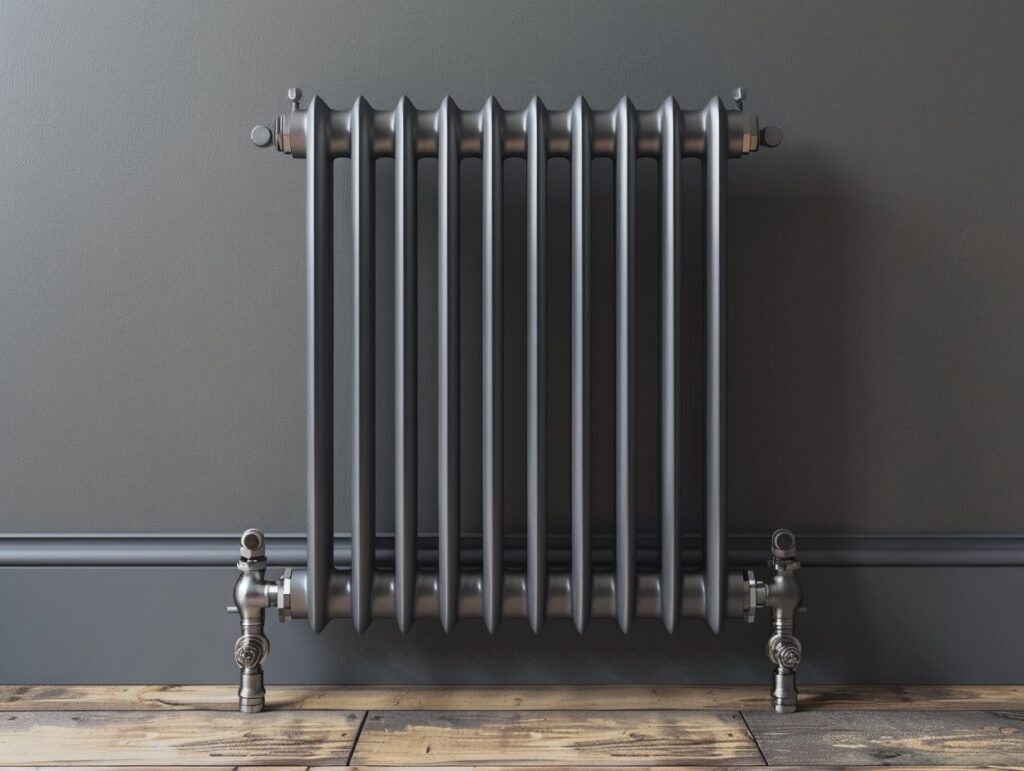Are you wondering how to keep your contemporary radiators in top condition? From regular cleaning to flushing the system, there are several maintenance requirements that can help ensure your radiators operate efficiently.
Let’s explore the key steps to maintaining your contemporary radiators, including checking for leaks, replacing parts as needed, and tips for maximising their efficiency. Keep reading to learn how to keep your radiators in tip-top shape!
Key Takeaways:
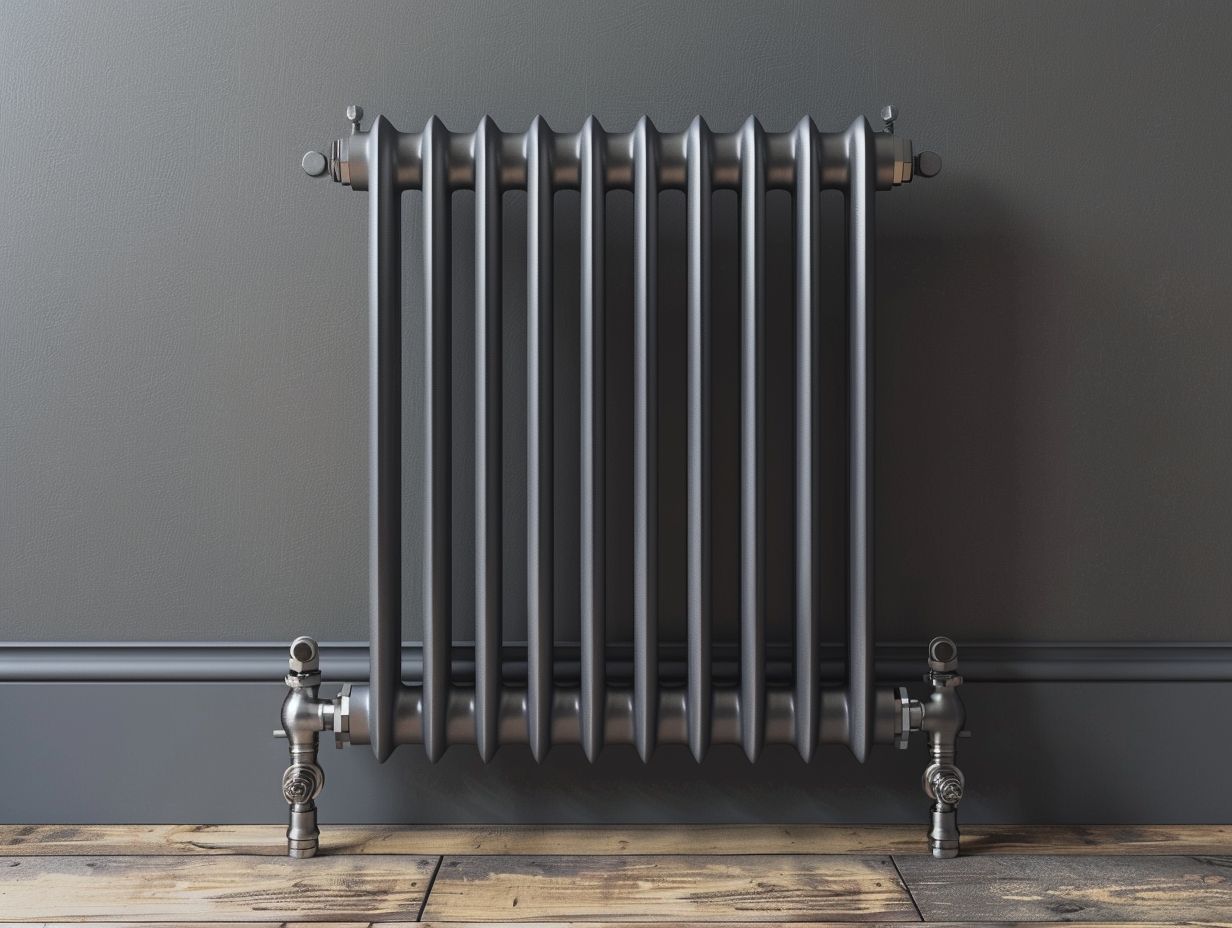
- Regular cleaning and dusting is essential for maintaining the efficiency and longevity of contemporary radiators. This should be done at least once a month to prevent dust and debris buildup.
- It is important to regularly check for leaks and damage in your radiator to prevent any potential hazards or costly repairs. Be sure to inspect all components and joints for any signs of wear and tear.
- Flushing the system and replacing worn-out parts are important maintenance tasks that should be done every few years to keep your contemporary radiators functioning properly. This will help prevent clogs, leaks, and other issues.
Maintenance Requirements for Contemporary Radiators
Ensuring proper maintenance of modern radiators is essential for their long life and efficiency within a heating system. Regular maintenance can help prevent issues such as leaks, rust, and corrosion, thus preserving the radiator surfaces and overall functionality.
Regular Cleaning and Dusting
Ensuring efficient heat distribution and air flow requires regular cleaning and dusting of radiators. Accumulated dust can impede the radiator’s ability to radiate heat effectively, leading to a decline in energy efficiency.
As time goes by, dust and debris settle on the radiator surfaces, creating a barrier that obstructs the proper release of heat. This not only affects the heating system’s performance but also diminishes the air quality within the room.
Clean radiators play a crucial role in maintaining a healthier living environment by reducing the circulation of allergens and pollutants that are often trapped in the dust. When radiators are kept clean, they operate more efficiently, resulting in cost savings and a more sustainable home heating solution.
Checking for Leaks and Damage
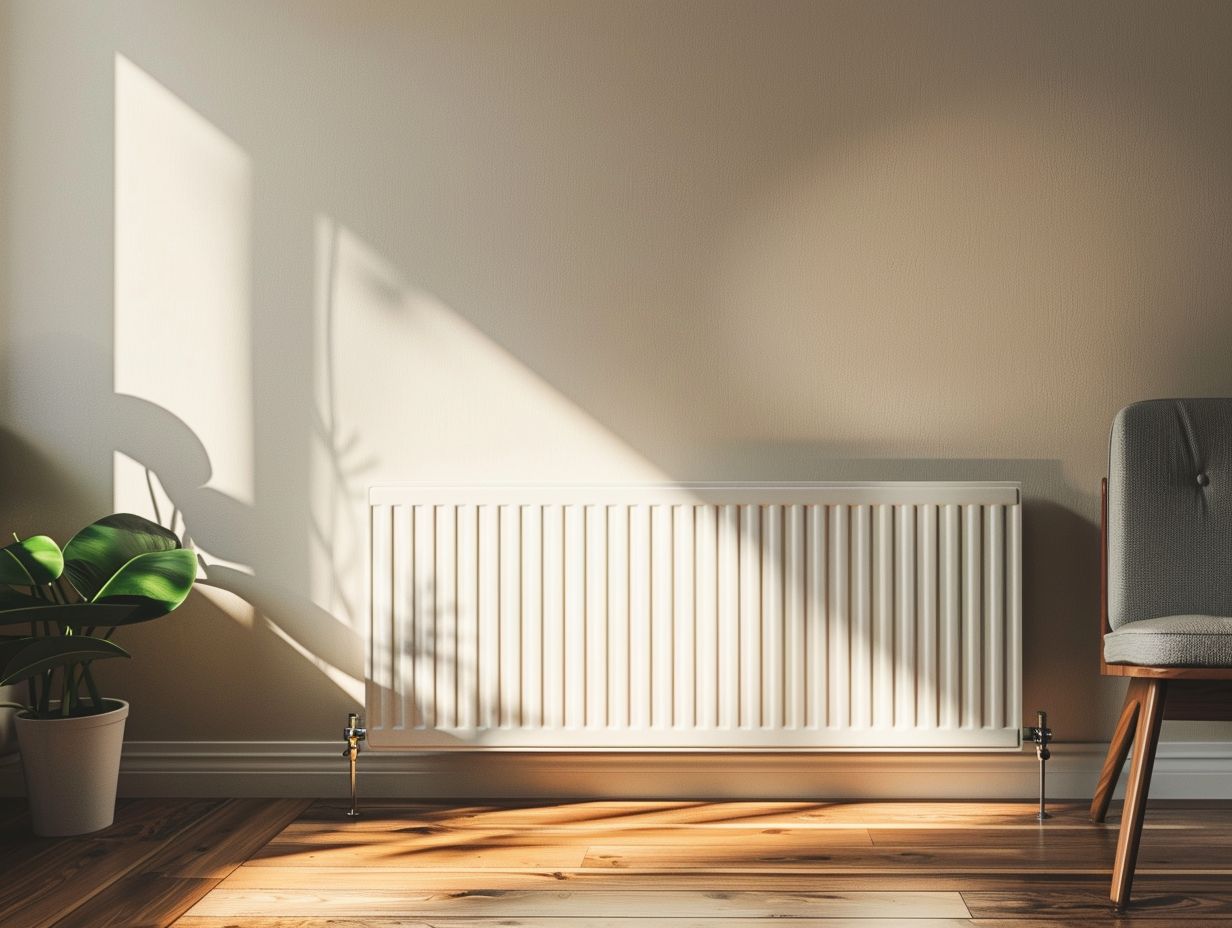
Regularly checking your radiators for leaks and damage is essential to prevent water loss and potential structural issues. Leaks have the potential to cause water damage and compromise the efficiency of your heating system.
If leaks in your radiators are left unattended, they can worsen and result in additional damage to nearby structures, which may lead to costly repairs. To identify common issues, be on the lookout for damp patches or water stains in the vicinity of the radiator, hissing sounds that could indicate a leak, or fluctuations in the heating system’s efficiency.
Taking proactive steps, such as installing a leak detection system or scheduling routine maintenance checks, can help reduce the likelihood of leaks and ensure that your heating system functions optimally.
Flushing the System
Periodically flushing your heating system can effectively eliminate accumulated debris and sediment that could impede the performance of your radiators. This maintenance process ensures that your system functions smoothly and efficiently.
It is crucial to include this maintenance task in your regular upkeep routine to prevent potential blockages and maintain optimal heat distribution throughout your property. By conducting system flushing, you not only improve the efficiency of your heating system but also extend its lifespan by reducing stress on components.
A clean heating system contributes to enhanced air quality in your living spaces, as it reduces the circulation of dust and allergens that can build up in a stagnant system.
Replacing Parts as Needed
Ensuring the timely replacement of worn-out or damaged parts in radiators is crucial for preventing malfunctions and maintaining efficient heating.
Faulty valves or components can have a significant impact on the overall performance of the heating system. It is essential to promptly replace key components such as thermostats, water pumps, and hoses to uphold the functionality of the radiator.
Neglecting to address signs of wear and tear can lead to issues like leaks, overheating, or inadequate heating distribution in the vehicle. Utilising high-quality replacement parts is imperative to optimise the efficiency and longevity of the heating system.
Subpar quality parts can result in diminished performance, increased energy consumption, and potential safety risks. Investing in quality components allows for the enhancement of the overall performance of the radiator system and helps avoid costly repairs in the long term.
Tips for Maintaining Efficient Radiators
Ensuring the efficiency of your radiators is crucial for achieving optimal heat balance and lowering energy costs. By adhering to specific tips and best practices, you can ensure that your heating system operates at its highest efficiency level.
Proper Usage and Temperature Control
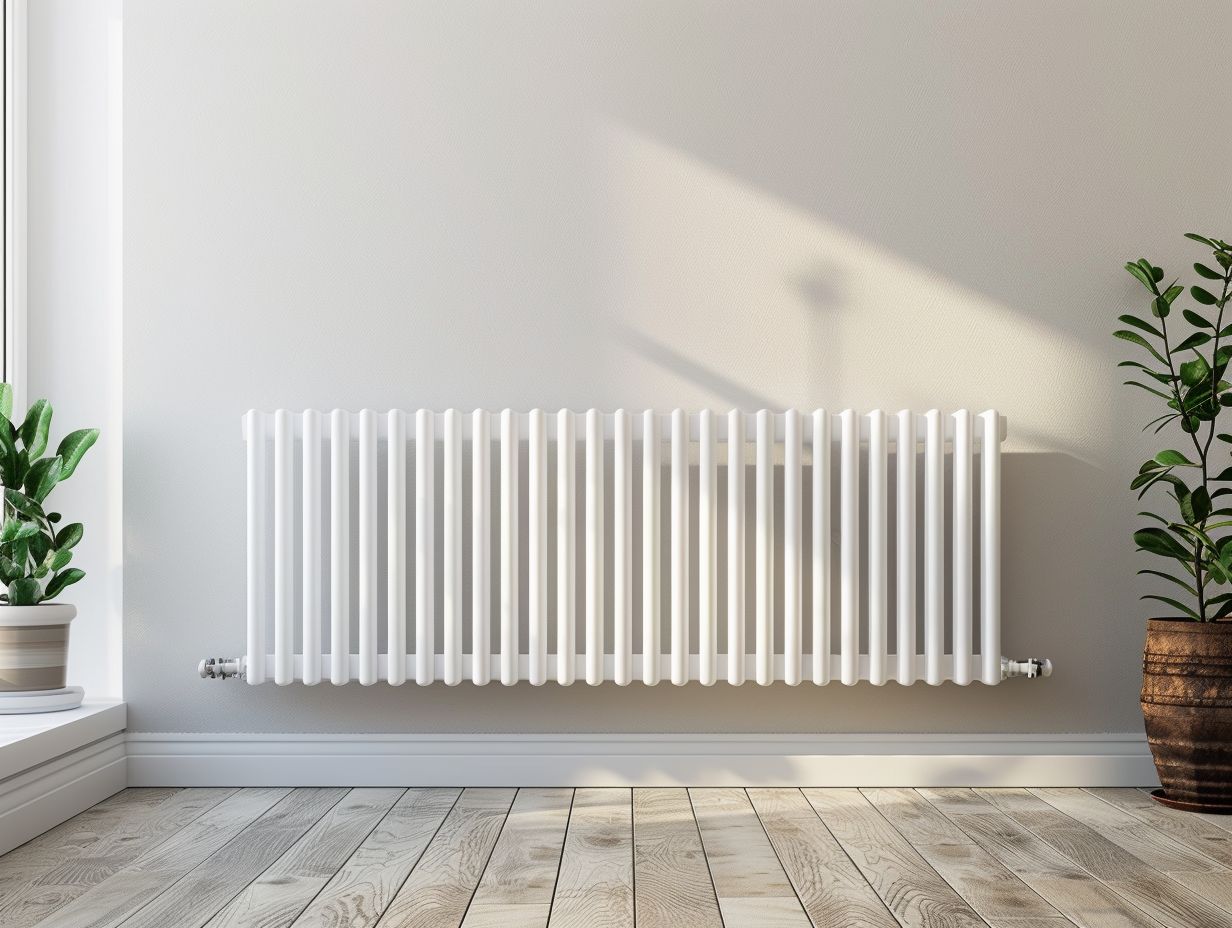
Proper usage and temperature control of radiators are essential for maintaining a comfortable indoor environment while optimising heat distribution. Adjusting radiator settings based on heating needs can help save energy and improve overall efficiency.
Understanding the different types of radiators available, such as convection and electric radiators, is crucial in determining the most suitable option for your space. It is important to bleed air from radiators regularly to ensure they function properly and efficiently.
Placing reflective panels behind radiators can help direct heat back into the room rather than being absorbed by the wall. By following these tips and being mindful of how radiators are used, you can significantly impact the effectiveness of your heating system and create a more comfortable living environment.
Choosing the Right Size and Type
When selecting the right size and type of radiators for your space, it is essential to consider various factors to ensure efficient heating. Properly sized radiators are crucial as they can provide adequate heat output without wasting energy or compromising performance.
Factors such as the square footage of the room, insulation levels, ceiling height, and the desired temperature range all contribute to determining the suitable radiator size.
Additionally, the type of radiator chosen, whether it be a traditional cast-iron radiator, a modern panel radiator, or a sleek designer radiator, is critical to achieving both functional and aesthetic objectives.
Making informed choices regarding these factors can have a significant impact on the overall efficiency of your heating system, resulting in cost savings and improved comfort during the winter season.
Regular Servicing and Maintenance
Regular servicing and maintenance of radiators are essential for keeping them operating efficiently and extending their lifespan. Scheduled maintenance can help you identify issues early and ensure optimal radiator performance.
Routine checks and upkeep play a crucial role in preventing unexpected breakdowns, which can disrupt heating systems and lead to discomfort. By regularly inspecting your radiators, you can address any potential issues promptly, ensuring that your heating system runs smoothly and efficiently.
This proactive approach not only saves you money on costly repairs but also helps in maintaining an energy-efficient heating environment throughout your living or working space. Therefore, investing in regular maintenance is a wise decision to enhance the longevity and performance of your radiators.
Frequently Asked Questions
What Are the Maintenance Requirements for Contemporary Radiators?
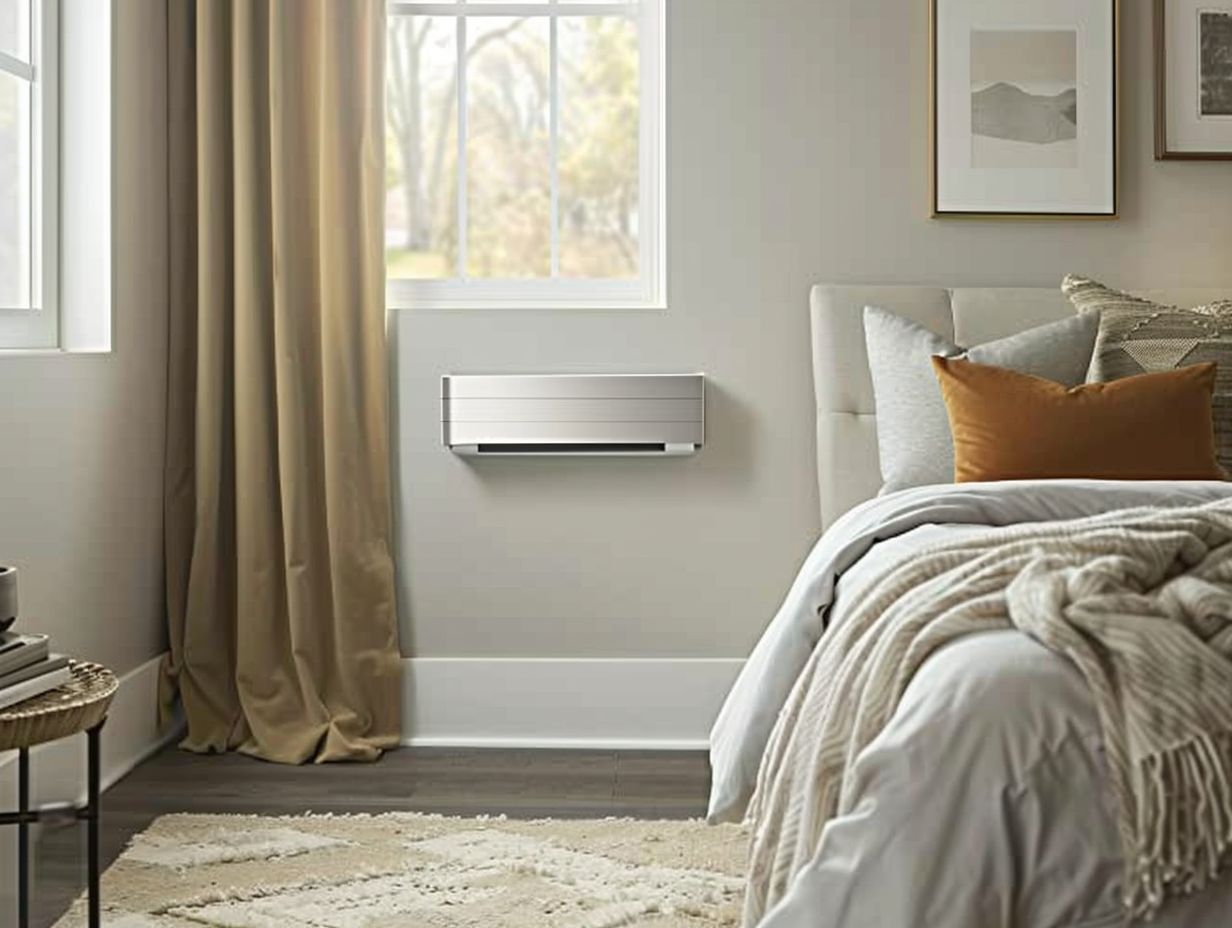
The maintenance requirements for contemporary radiators may vary depending on the specific type and model. However, some common maintenance tasks include regular cleaning, checking for leaks, and bleeding the radiators to remove trapped air.
Do I Need to Hire a Professional for Maintenance?
In most cases, you can perform the maintenance tasks for contemporary radiators yourself. However, if you are not comfortable or familiar with the process, it is recommended to hire a professional to ensure it is done correctly and safely.
How Often Should I Clean My Contemporary Radiators?
It is recommended to clean your radiators at least once a year to remove dust and debris that may accumulate on them. However, if you have pets or live in a particularly dusty environment, you may need to clean them more frequently.
What Should I Use to Clean My Radiators?
Mild soap and water or a gentle cleaner specifically designed for radiators can be used to clean contemporary radiators. Avoid using harsh chemicals or abrasive cleaners, as they can damage the finish of the radiator.
How Do I Check for Leaks in My Radiator?
To check for leaks, first turn off the heating system and let the radiator cool down. Then, inspect the radiator for any visible signs of leaks, such as puddles or wet spots. You can also check for leaks by turning the heating system back on and feeling for any hot spots on the radiator.
Why Do I Need to Bleed My Radiators?
Bleeding your radiators is necessary to remove any trapped air that can cause them to not heat up properly. This can also help improve the efficiency of your heating system and save on energy costs. Bleeding should be done at least once a year.

